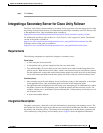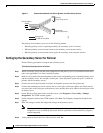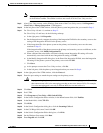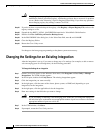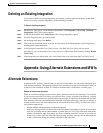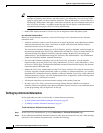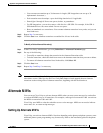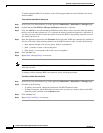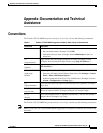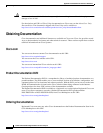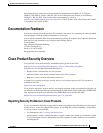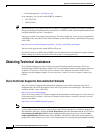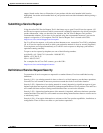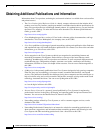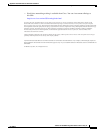
23
Toshiba CTX 670 SMDI Integration Guide for Cisco Unity 4.0
OL-4404-07
Appendix: Documentation and Technical Assistance
Conventions
Appendix: Documentation and Technical
Assistance
Conventions
The Toshiba CTX 670 SMDI Integration Guide for Cisco Unity 4.0 uses the following conventions.
The Toshiba CTX 670 SMDI Integration Guide for Cisco Unity 4.0 also uses the following conventions:
Note Means reader take note. Notes contain helpful suggestions or references to material not covered in the
document.
Table 9 Toshiba CTX 670 SMDI Integration Guide for Cisco Unity 4.0 Conventions
Convention Description
boldfaced text Boldfaced text is used for:
• Key and button names. (Example: Click OK.)
• Information that you enter. (Example: Enter Administrator in the User
Name box.)
< >
(angle brackets)
Angle brackets are used around parameters for which you supply a value.
(Example: In the Command Prompt window, enter ping <IP address>.)
-
(hyphen)
Hyphens separate keys that must be pressed simultaneously. (Example: Press
Ctrl-Alt-Delete.)
>
(right angle
bracket)
A right angle bracket is used to separate selections that you make:
• On menus.(Example: On theWindowsStart menu, clickSettings > Control
Panel > Phone and Modem Options.)
• In the navigation bar of the Cisco Unity Administrator. (Example: Go to the
System > Configuration > Settings page.)
[x]
(square brackets)
Square brackets enclose an optional element (keyword or argument). (Example:
[reg-e164])
[x | y]
(vertical line)
Square brackets enclosing keywords or arguments separated by a vertical line
indicate an optional choice. (Example: [transport tcp | transport udp])
{x | y}
(braces)
Braces enclosing keywords or arguments separated by a vertical line indicate a
required choice. (Example: {tcp | udp})



